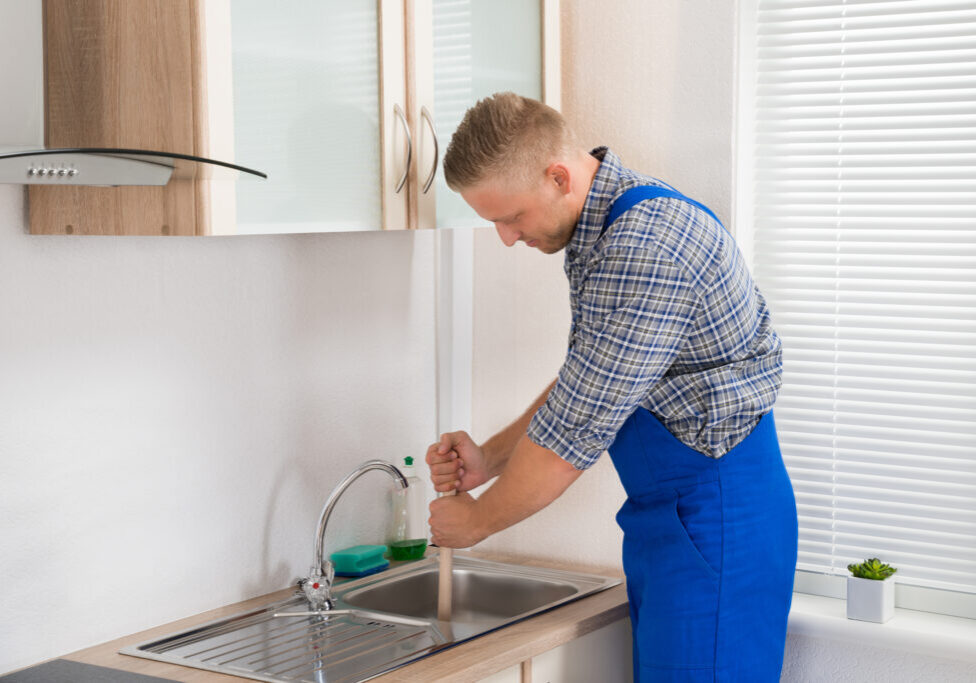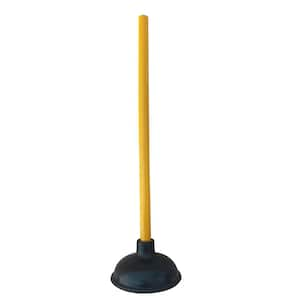Tips to Successfully Apply Plungers and Drain Cleaners: Expert Guide
Tips to Successfully Apply Plungers and Drain Cleaners: Expert Guide
Blog Article
What are your thoughts with regards to A Guide to Plungers (and How to Use Them)?

Introduction
Proper maintenance of family drains is vital for stopping blockages and guaranteeing smooth water flow. Among the secret tools in every homeowner's toolkit is the bettor, together with different drain cleansers developed to take on persistent clogs properly. This post explores how to utilize bettors and drainpipe cleaners successfully to keep your drains moving openly.
Section 1: Understanding Bettors
Sorts of Plungers
There are numerous sorts of plungers offered, each created for various types of drains and clogs. The most typical types consist of mug bettors, flange bettors, and accordion bettors.
How Plungers Job
Bettors work on the concept of producing pressure and suction to dislodge blockages. When appropriately applied over a drainpipe, they create a vacuum that can pull out particles or break up clogs.
Picking the Right Plunger
Picking the appropriate bettor depends on the kind of drain and the nature of the clog. Mug plungers are ideal for sinks and bathtubs, while flange plungers are better fit for bathrooms due to their design.
Typical Errors with Bettors
Staying clear of these mistakes guarantees effective plunging: improper seal around the drainpipe, inadequate pressure, and not clearing surrounding particles.
Section 2: Using Plungers Successfully
Preparation
Prior to plunging, make certain the bettor covers the drainpipe entirely and creates a limited seal. Clear any noticeable particles around the drainpipe opening.
Technique
Start with mild plunging activities to build suction. Increase stress progressively, using a consistent rhythm. Repeat as required till the drain clears.
Troubleshooting Tips
If plunging doesn't function, try readjusting the seal, using petroleum jelly for a far better seal, or utilizing a various type of plunger.
Area 3: Comprehending Drain Cleaners
Sorts Of Drain Cleaning Company
Drain cleansers can be chemical or chemical. Chemical cleansers make use of strong chemicals to dissolve blockages, while enzymatic cleansers make use of natural enzymes to break down organic matter.
Exactly How Drainpipe Cleaning Company Work
Chemical cleansers react with obstructions to dissolve them, while chemical cleaners break down natural materials like hair and grease without harming pipelines.
Security Factors to consider
Constantly wear gloves and eye protection when utilizing chemical drainpipe cleansers. Make sure adequate air flow and comply with maker instructions thoroughly.
Eco-Friendly Alternatives
Consider using vinegar and baking soda or enzyme-based cleaners for green options that are much safer for pipes and the setting.
Area 4: Making Use Of Drainpipe Cleaners Properly
Application Methods
Put chemical cleansers straight into the drainpipe opening. Permit them to help the advised time prior to flushing with warm water. Enzymatic cleaners should sit overnight.
Safety measures
Avoid mixing different types of cleansers, as this can create toxic fumes. Never ever utilize chemical cleansers together with a plunger, as spilling can occur.
Managing Stubborn Blockages
For persistent blockages, take into consideration using a pipes serpent or calling an expert plumbing professional to stop damage to pipes.
Final thought
To conclude, recognizing how to use plungers and drain cleansers properly is important for preserving healthy plumbing systems. By picking the right devices and methods, house owners can tackle minor clogs and prevent significant pipes concerns down the line.
How To Properly Use A Plumbing Snake To Clear Drains
When any drain clogs in our home arise, we tend to gravitate toward the plunger and little else. In cases where the plunger and its vacuum-created pressure are not able to clear clogs, many immediately move to harmful chemicals or simply call their plumber to fix the issue.
we’re happy to help with all drain cleaning needs and concerns. This includes informing you on a few other home remedies you may have at your disposal for minor to moderate clogs, one of which is the use of a plumbing snake. Many people have never used one of these before – let’s go over the steps to take when your drain clogs and you have a plumbing snake available.
Attempt Plunger Use
The first step here, as we noted above, should indeed be to grab your plunger when you notice a drain clog and attempt to resolve it this way. If you’re unsure how to use a particular type of plunger, our plumbers can answer any questions you have. If this doesn’t do the trick, however, you move on to the snake.
Locate And Prepare Snake
A plumbing snake is a metal or plastic device that’s generally about a quarter of an inch thick. It’s design with significant extensions, meant to reach down into your clogged drain and push the clog out. Snakes also contain drain augers that will latch onto and push stubborn blockages.
If your plunger doesn’t clear a clog, locate your snake and bring it to the drain in question. We also recommend keeping a bucket nearby to collect the clog once you pull it out, plus we’d advise wearing goggles and possibly protective gloves.
Feed Snake
Once you’re ready to go, feed the snake slowly down the drain, using the crank device it comes with to keep it moving until it finds the clog. Once this happens, much of the clog will be latched onto the coil so you can pull it out, while the rest will simply break up and flow downward.
Detach Debris
Remove the snake slowly from the drain, and once you’ve done so, pick off any debris that’s stuck to the coil. This is another area where wearing gloves is a must.
Flush Drain
Finally, take a few minutes to ensure the snake has done its job correctly. If you’ve been using it on a toilet, flush the toilet a couple times and make sure everything flows well. If you’ve used it on a different drain, flush it with some room temperature water.
https://www.mybuddytheplumber.com/blog/how-to-properly-use-a-plumbing-snake-to-clear-drains/

Application Methods
Put chemical cleansers straight into the drainpipe opening. Permit them to help the advised time prior to flushing with warm water. Enzymatic cleaners should sit overnight.
Safety measures
Avoid mixing different types of cleansers, as this can create toxic fumes. Never ever utilize chemical cleansers together with a plunger, as spilling can occur.
Managing Stubborn Blockages
For persistent blockages, take into consideration using a pipes serpent or calling an expert plumbing professional to stop damage to pipes.
Final thought
To conclude, recognizing how to use plungers and drain cleansers properly is important for preserving healthy plumbing systems. By picking the right devices and methods, house owners can tackle minor clogs and prevent significant pipes concerns down the line.
How To Properly Use A Plumbing Snake To Clear Drains
When any drain clogs in our home arise, we tend to gravitate toward the plunger and little else. In cases where the plunger and its vacuum-created pressure are not able to clear clogs, many immediately move to harmful chemicals or simply call their plumber to fix the issue.
we’re happy to help with all drain cleaning needs and concerns. This includes informing you on a few other home remedies you may have at your disposal for minor to moderate clogs, one of which is the use of a plumbing snake. Many people have never used one of these before – let’s go over the steps to take when your drain clogs and you have a plumbing snake available.
Attempt Plunger Use
The first step here, as we noted above, should indeed be to grab your plunger when you notice a drain clog and attempt to resolve it this way. If you’re unsure how to use a particular type of plunger, our plumbers can answer any questions you have. If this doesn’t do the trick, however, you move on to the snake.
Locate And Prepare Snake
A plumbing snake is a metal or plastic device that’s generally about a quarter of an inch thick. It’s design with significant extensions, meant to reach down into your clogged drain and push the clog out. Snakes also contain drain augers that will latch onto and push stubborn blockages.
If your plunger doesn’t clear a clog, locate your snake and bring it to the drain in question. We also recommend keeping a bucket nearby to collect the clog once you pull it out, plus we’d advise wearing goggles and possibly protective gloves.
Feed Snake
Once you’re ready to go, feed the snake slowly down the drain, using the crank device it comes with to keep it moving until it finds the clog. Once this happens, much of the clog will be latched onto the coil so you can pull it out, while the rest will simply break up and flow downward.
Detach Debris
Remove the snake slowly from the drain, and once you’ve done so, pick off any debris that’s stuck to the coil. This is another area where wearing gloves is a must.
Flush Drain
Finally, take a few minutes to ensure the snake has done its job correctly. If you’ve been using it on a toilet, flush the toilet a couple times and make sure everything flows well. If you’ve used it on a different drain, flush it with some room temperature water.
https://www.mybuddytheplumber.com/blog/how-to-properly-use-a-plumbing-snake-to-clear-drains/

I hope you enjoyed our post about How To Use Your Toilet Plunger Correctly in 5 Easy Steps. Thank you so much for taking a few minutes to read through our blog. If you please pause to share this blog entry if you liked it. Thanks a bunch for your time. Kindly visit our site back soon.
This Post Report this page